中国の仏像
1階 1室
2025年4月22日(火) ~
2026年4月19日(日)

「東洋美術をめぐる旅」をコンセプトに、中国、朝鮮半島、東南アジア、西域、インド、エジプトなどの美術と工芸、考古遺物を展示しています。
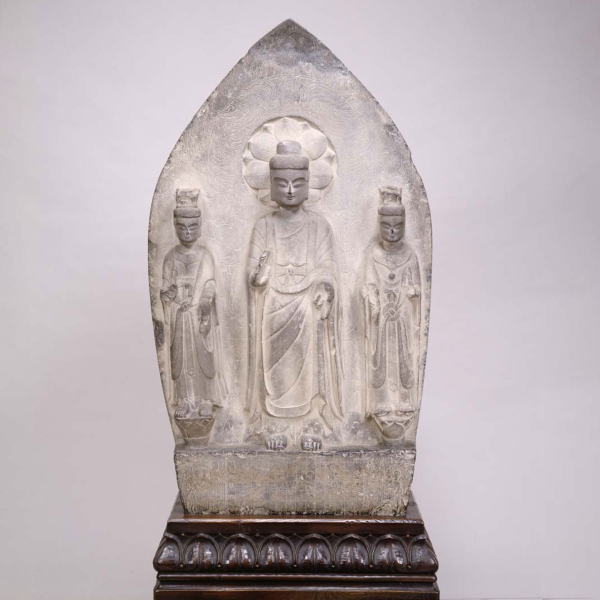
重要文化財 如来三尊立像 中国 東魏時代・6世紀
1階 1室
2025年4月22日(火) ~ 2026年4月19日(日)
紀元前後頃にインドから仏教が伝わった中国では、南北朝時代に入ると国家的な規模で寺院の造営が行なわれるようになり大いに隆盛しました。この展示では、中国仏教彫刻の最盛期である南北朝時代から唐時代にかけての小金銅仏と石仏を紹介すします。小金銅仏の微細な表現、地域と時代によって異なる石材へのこだわり、石窟寺院での大規模な造像の一端をご覧ください。
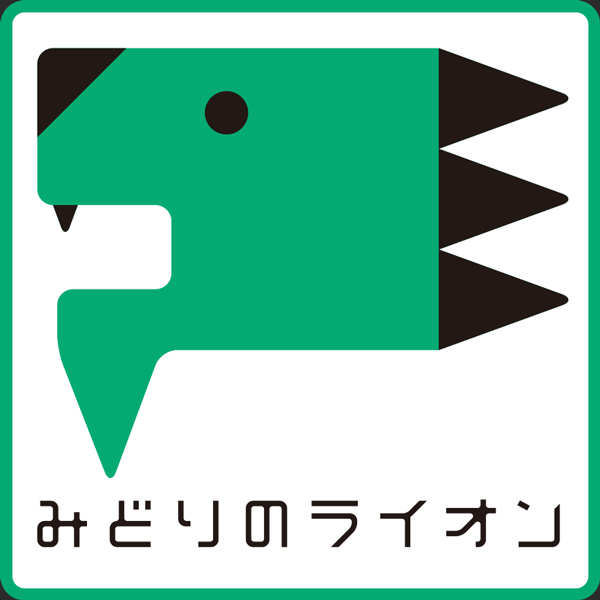
2階 2室
2024年4月2日(火) ~ 2026年3月31日(火)
「オアシス」では、アジアの豆知識を映像や体験を通してお楽しみいただけます。オアシス2は、映像で旅の紹介をします。エジプトからインドへ商いをしながら旅する商人の旅や、三蔵法師の旅をご覧ください。
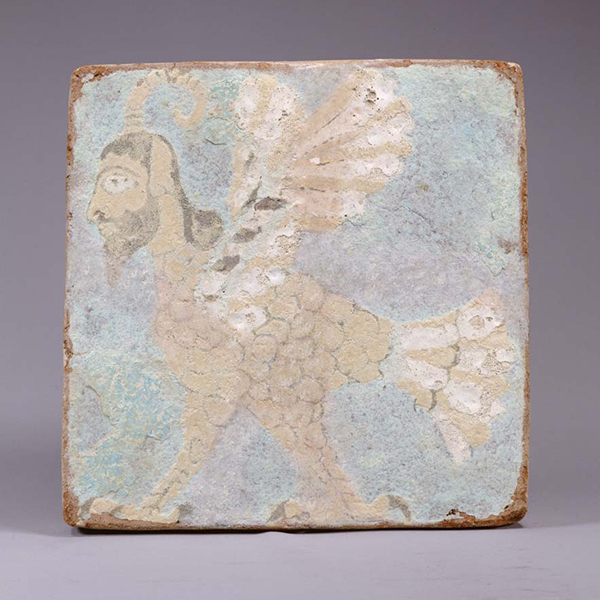
多彩釉画像タイル
イラン北西部 鉄器時代・前8~前7世紀
2階 3室
2025年9月9日(火) ~ 2025年12月21日(日)
人類最古の文明揺籃の地として知られる西アジアとエジプト、東地中海地域の古代から中世までの文化を紹介します。古代エジプトの石器収集で近年知られるようになったシートン=カー氏から1905年に寄贈された石器コレクションをまとめて展示するほか、シリアとイラクの出土品や土偶、イランの彩文土器や金属器、装身具、さまざまな技法で製作された東地中海地域の古代ガラス、イスラーム陶器などを展示します。
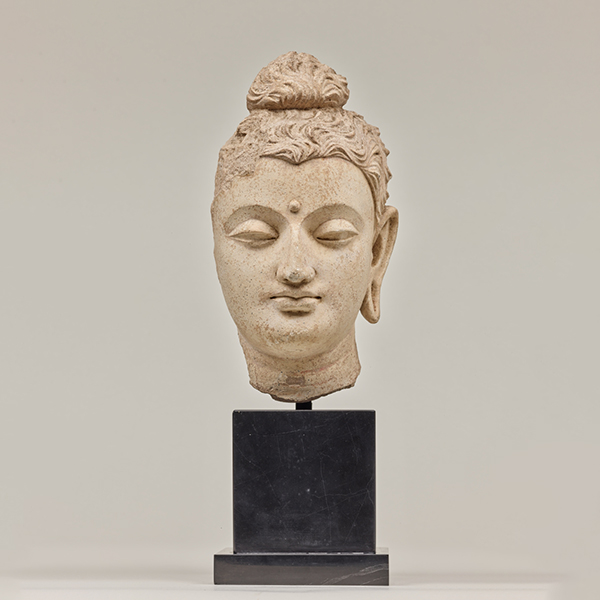
如来頭部
アフガニスタン、ハッダ 3~5世紀
2階 3室
2025年7月1日(火) ~ 2025年12月21日(日)
北インドではクシャーン朝(1~3世紀)に仏教美術が隆盛しました。1世紀頃にガンダーラ、マトゥラーにおいて相次いで仏像の制作が始まり、また、ガンダーラでは仏陀の生涯をつづった仏伝美術が盛んとなりました。ここではクシャーン朝はじめ、サータヴァーハナ朝のアマラーヴァティー美術や各時代の仏教彫刻を中心に、インドのヒンドゥー教彫刻なども紹介します。
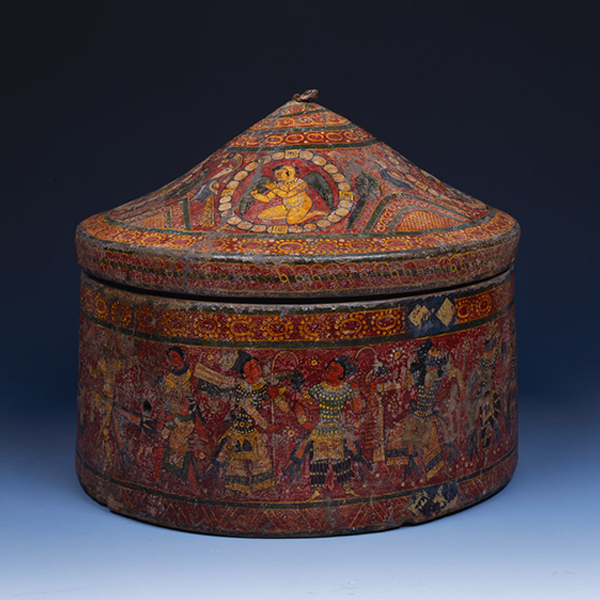
舎利容器
中国・クチャ出土 大谷探検隊将来品 6~7世紀
2階 3室
2025年9月30日(火) ~ 2025年11月24日(月・休)
20世紀初頭にシルクロードを探検した大谷探検隊の将来品を中心に展示します。今回は、ホータンの如来像頭部、クチャ出土の舎利容器、クムトラ石窟の菩薩像頭部、敦煌莫高窟蔵経洞で発見された地蔵菩薩立像幡などを展示し、シルクロードの文化を紹介します。
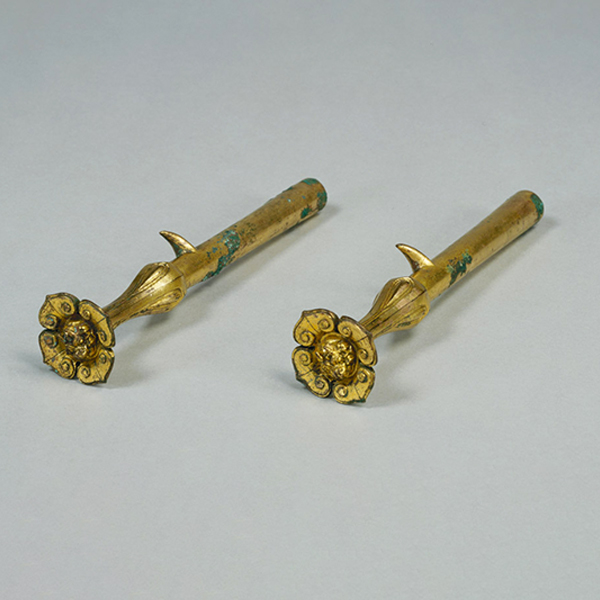
蓋弓帽
中国 前漢時代・前2~前1世紀
3階 4室
2025年11月5日(水) ~ 2026年3月22日(日)
中国は古来豊富な地下資源や豊かな自然のめぐみを有する土地柄で、人類はその地に高度な文明を築いてきました。
展示の冒頭では黄土高原に興った彩陶を紹介し、次に戦国時代から明時代の瓦の造形を紹介します。
また、殷時代の甲骨や骨製品を紹介するとともに、各時代・地域の石器や玉器を通じて、工芸技術の発展と精神性を紹介します。
今回はさらに、漢時代の車馬を彩った金銅製の部材や、貴人の埋葬に用いられたガラス製品等を展示します。
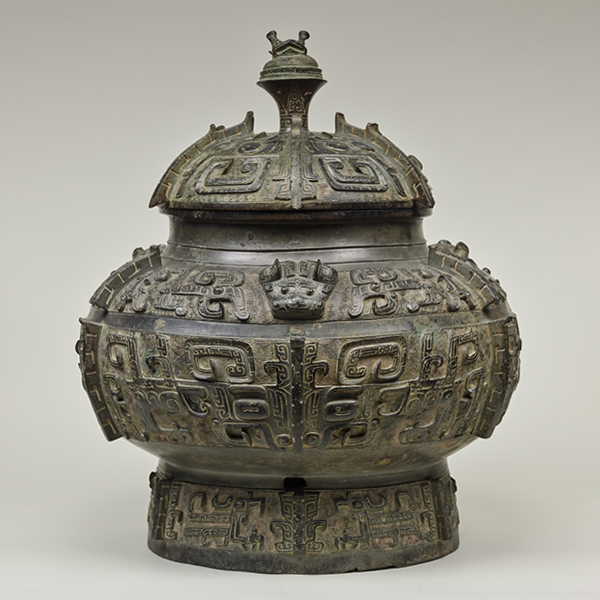
饕餮文瓿
中国 殷時代・前13~前11世紀 坂本キク氏寄贈
3階 5室
2025年10月21日(火) ~ 2026年3月8日(日)
夏王朝と目される二里頭文化期をはじめ、中国北辺の草原地帯および中国西南部(四川・雲南)など地域色の濃厚な作品郡など、先祖の祭礼や戦争、日常生活に到るまで様々な場面に用いられた青銅器を紹介します。殷時代から清時代にいたる器物を通覧し、美意識の変化をよみときます。
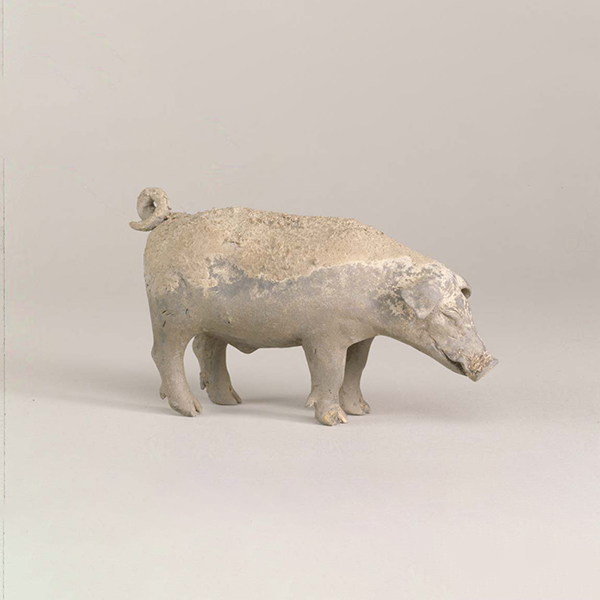
灰陶豚
中国 前漢時代・前2~前1世紀 広田松繁氏寄贈
3階 5室
2025年11月5日(水) ~ 2026年3月22日(日)
戦国時代以降、中国文明が成熟していくに従い、王侯貴族は土を丘のように盛った墳墓を営み、その地下には死者の生活を支える家財の模型(明器)や人形(俑)などを大量に供えるようになりました。今回は漢時代の多彩な動物造形をはじめ、唐時代の三彩の俑や器物を紹介します。
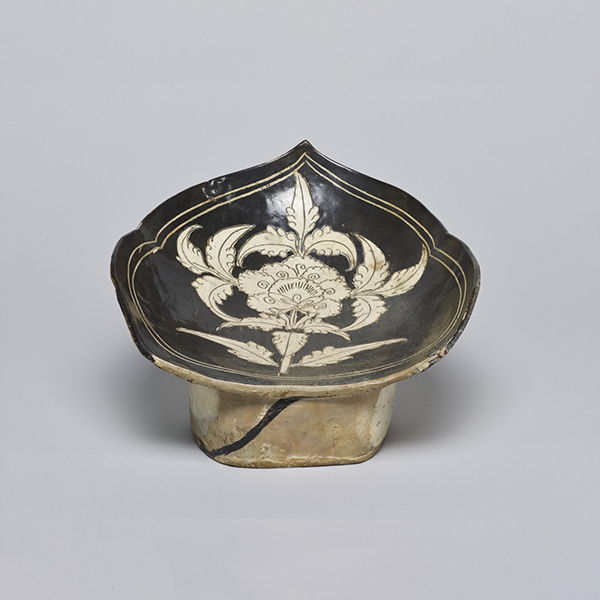
白釉黒地白花牡丹文枕
中国・磁州窯 北宋時代・12世紀 横河民輔氏寄贈
3階 5室
2025年8月19日(火) ~ 2025年12月7日(日)
中国唐時代から清時代に至るおよそ1300年のあいだにつくられた陶磁器を紹介します。今回は「博物館でアジアの旅 日韓国交正常化60周年 てくてくコリア―韓国文化のさんぽみち―」(9月23日~11月16日)で、10室で高麗時代の青磁と金銀器を特集するのにあわせて、同時代の宋、金時代の中国各地の陶磁器をとりあげ、のぞきのケースでは金属器、そして金属器の器形に影響を受けた陶磁器の作例もあわせて展示します。
また、5のケースでは宋、元、明時代の景徳鎮窯で焼かれた水注を集めます。
なかでも日本で人気を集めた嘉靖金襴手の水注と、それを近代に写した三代高橋道八の金襴手水注を並べて紹介します。
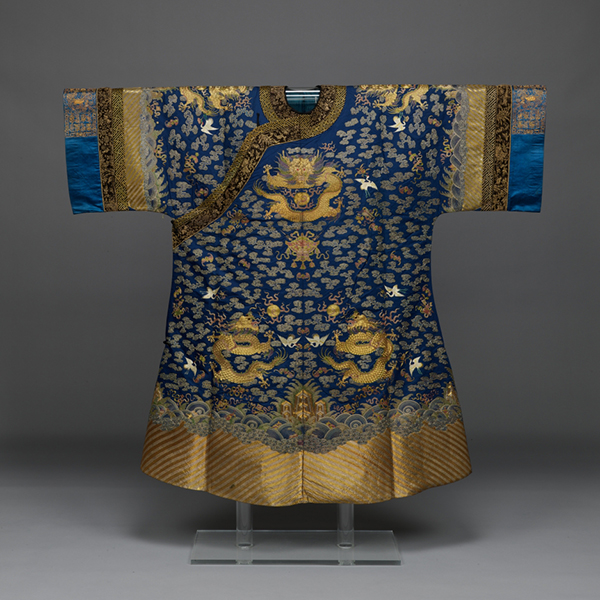
袍 紺綾地龍文様
中国 清時代・19世紀 五十嵐司氏寄贈
3階 5室
2025年11月5日(水) ~ 2026年2月1日(日)
清朝は17世紀から20世紀初頭まで、中国本土からモンゴル高原にかけて、満州族が治めた中国の王朝です。明王朝の制度を引き継ぎ、織物の官営工房が設けられたのに加え、貴族が用いる生活用品には、宮廷の絵師の下図をもとに精緻な刺繡がほどこされました。民間においても刺繡は発展し、地方で特色のある作品が製作されるなど、染織技術は精緻を極めました。まるで絵画のように文様を表した作品もつくられ、華やかな色遣いは、豪華絢爛な清朝の文化をものがたっています。
表された文様は、ただ作品に色を添えるだけでなく、すべてのモチーフに吉祥の願いがこめられています。たとえば、四神のひとつである龍をはじめ、長寿を象徴する鶴や、桃、蝶、「登龍門」の伝説でも知られ、立身出世につながる鯉、「百花の王」として親しまれ、富と高い地位を象徴する牡丹、中国語において「福」と同じ発音であることから、幸福の象徴とされる蝙蝠(こうもり)など、中国の吉祥文様の種類は多岐にわたります。
本展では、とくに清朝の錦と刺繡に着目し、衣装や衣装の飾り、軸物などさまざまな用途の作品をご覧いただきます。清朝の染織の粋をお楽しみください。
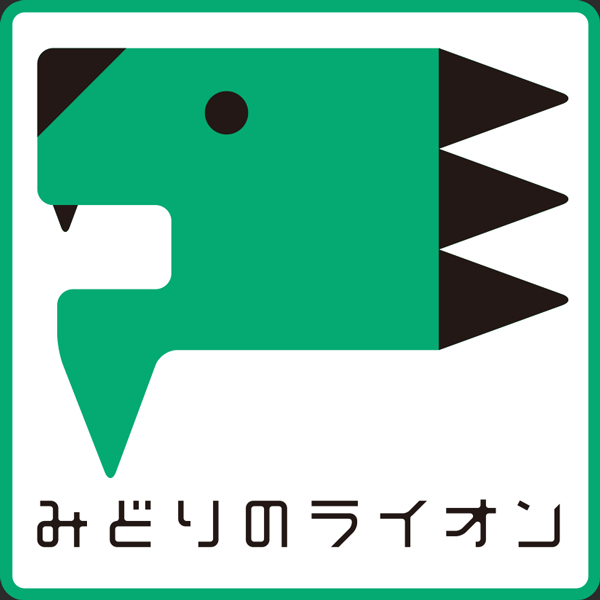
3階 6室
2024年4月2日(火) ~ 2026年3月31日(火)
今日の運勢、相性占い、手相、姓名判断など、日本人にとって、現在でも占いは、とても身近なものではないでしょうか。占いは古来から、アジアの国々でも、人々の暮らしに息づいていたようです。その国の信仰、思想、天文学あるいは統計学にも基づいて、占いは発展していきました。
このコーナーでは、そんな占いの一部を皆様に体験していただこうと思います。東洋館をめぐる旅の途中に、オアシスで一息ついて、旅の行方を占ってみてください。また、あまり良い結果がでなかったとしても、がっかりしないでください。ラッキーアイテムのスタンプを用意していますので、運を良いほうに転じて、楽しい旅を続けてください。
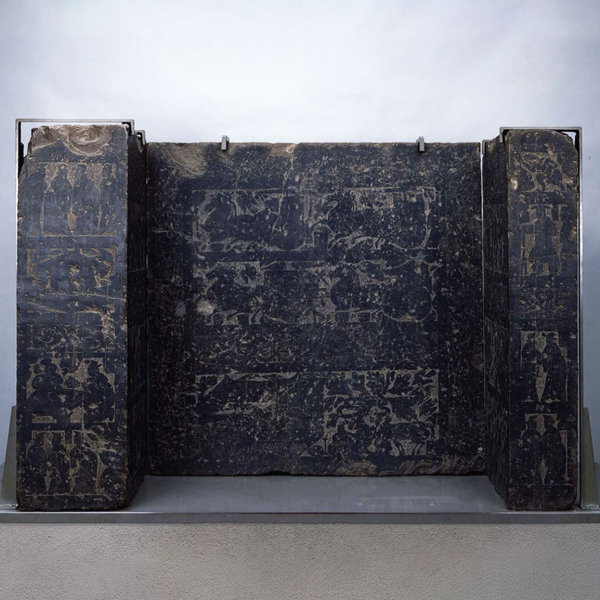
画像石 建物/丁蘭と木偶他
石灰岩製 後漢時代・1~2世紀 中国山東省孝堂山下石祠
4階 7室
2025年4月22日(火) ~ 2026年4月19日(日)
後漢時代(1~2世紀)の中国山東省や河南省南部等では墓の上に祠(ほこら)を、地下には棺などを置く部屋である墓室を石で作りました。祠や墓室の壁、柱、梁などの表面には、先祖を祭るために当時の世界観、故事、生活の様子などを彫刻して飾りました。画像石と呼ばれるこれらの石刻画芸術は中国の様々な地域で流行しましたが、ここではとくに画題が豊富で優品の多い山東省の作品を一堂に集めて展示します。
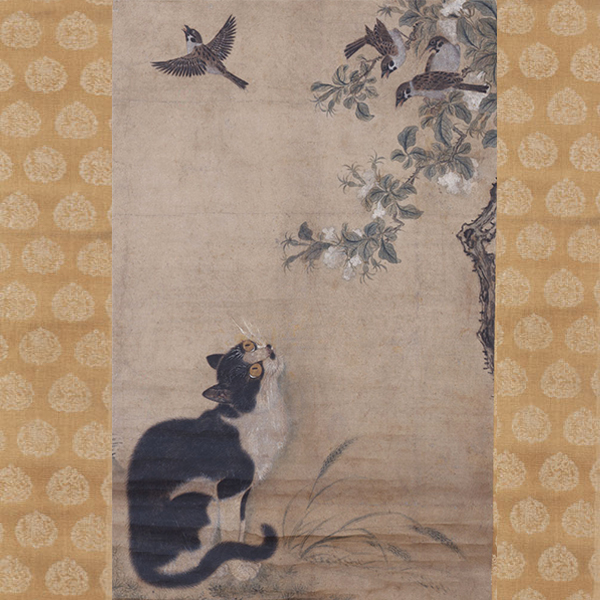
雀猫図軸
伝卞相壁筆 朝鮮半島 朝鮮時代・18世紀 小倉コレクション保存会寄贈 [展示期間:2025年10月19日(日)まで]
4階 8室
2025年9月23日(火・祝) ~ 2025年11月16日(日)
日韓国交正常化60周年を記念して、これまでまとめての鑑賞機会を提供できなかった、東京国立博物館の所蔵・管理する朝鮮王朝時代の書跡、絵画の優品を一堂に集め、当時の日韓交流の記録と共に展示します。
絵画は、山水、人物、花鳥、仏画の主題別にそれぞれの魅力を伝え、書跡は、影響や交流のあった中国文人の参考作例と並べて関係の重要性を提示します。また、両班の書斎をイメージできるよう、朝鮮時代の家具・文房具等もあわせて展示します。
東洋館9室、10室と連携した特集展示です。
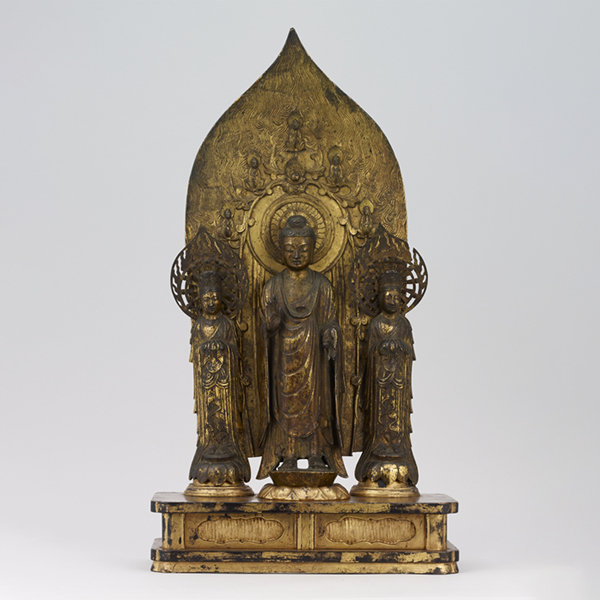
重要文化財 如来および両脇侍立像
朝鮮半島 法隆寺献納宝物 朝鮮・三国時代・6~7世紀
5階 9室
2025年9月23日(火・祝) ~ 2025年12月21日(日)
本特集は日韓国交正常化60周年を記念して、東洋館8、9、10室が連動して行う展示の一つです。
本特集では、日本と朝鮮半島との交流によって日本にもたらされた作品を紹介します。(朝鮮通信使関連資料については東洋館8室で展示します)。
百済から日本に仏教が公伝した日本仏教の最初期を彷彿させる金銅仏、高麗から日本にもたらされた経典と経箱、日本から注文した茶碗などを展示します。
日本にもたらされた朝鮮半島の文化の諸相をお楽しみください。
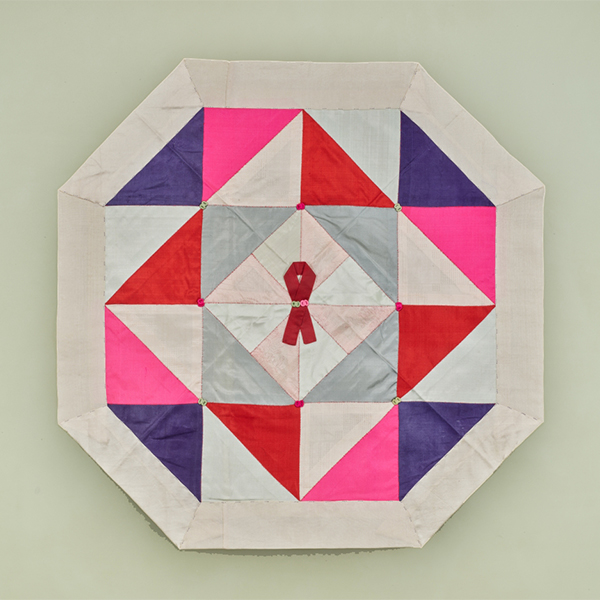
チョガッポ 三角繋ぎ文様縫い合わせ
朝鮮半島 19~20世紀
5階 10室
2025年9月23日(火・祝) ~ 2025年12月21日(日)
本特集では、日韓国交正常化60周年を記念して、およそ三国時代から朝鮮時代、4世紀から20世紀にかけた朝鮮半島の歴史を、考古、美術、民族作品を通して展示します。
「ここで・ひと・とき」というキーワードをもとに、時空を旅するように、時代ごとにその土地や人びとの暮らしにちなんださまざまな作品を紹介します。
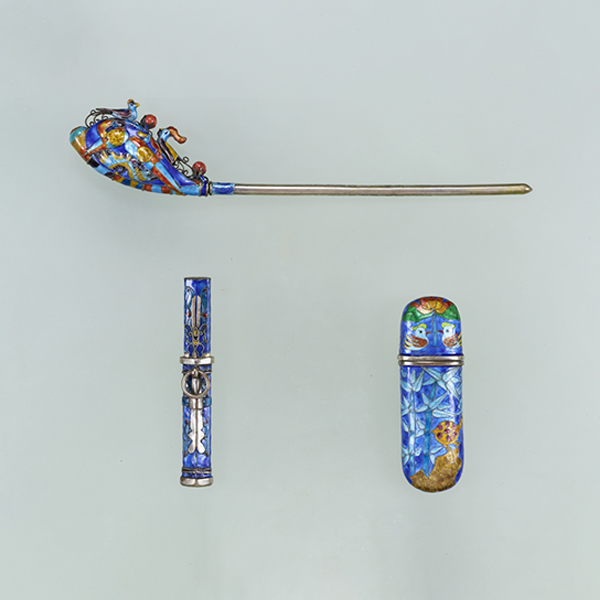
七宝簪・粧刀・眼鏡入
朝鮮半島 19~20世紀
5階 10室
2025年9月23日(火・祝) ~ 2025年12月21日(日)
本特集は、日韓国交正常化60周年を記念して、およそ三国時代から朝鮮時代、4世紀から20世紀にかけた朝鮮半島の歴史を、考古、美術、民族作品を通して展示いたします。
「ここで・ひと・とき」というキーワードをもとに、時空を旅するように、時代ごとにその土地や人びとの暮らしにちなんださまざまな作品を紹介します。
インドネシア・スマトラ島 織りと染めの世界
地下 13室
2025年11月5日(水) ~
2026年2月1日(日)
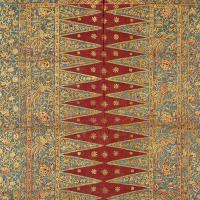
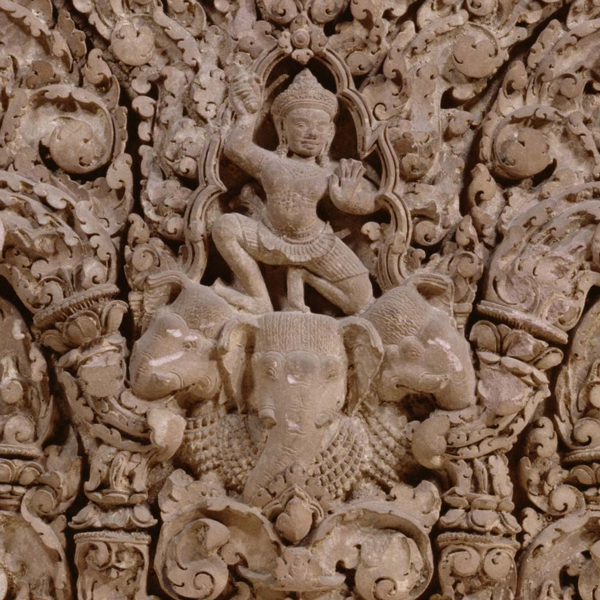
楣(部分)
カンボジア、プラサート・スララウ アンコール時代・10世紀 フランス極東学院交換品
地下 11室
2025年4月15日(火) ~ 2026年4月19日(日)
現在のカンボジアにおいて、9世紀初頭から600年余り続いたアンコール王朝の時代には、クメール族による独特の美術様式が完成しました。中でも11世紀末から12世紀にかけて造られたアンコール・ワットがその最盛期です。本展示室には、10~13世紀にアンコールの寺院を飾った仏教およびヒンドゥー教の彫像、浮彫の建築装飾をはじめとする石造彫刻を展示しています。いずれも1944年に、当館とフランス極東学院との間で交換された文化財です。
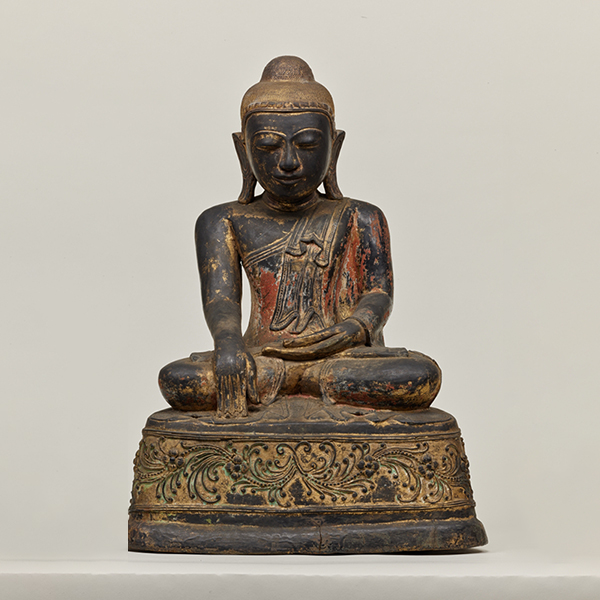
仏陀坐像
ミャンマー コンバウン朝・18世紀
地下 12室
2025年9月9日(火) ~ 2025年12月21日(日)
東南アジアでは、古代よりインド、スリランカの影響を受けて仏教やヒンドゥー教の尊像やそれを安置する祠堂が造営されました。それらはいずれも地域特有の発展をとげ、独自の美術様式が花開きました。ここでは、ミャンマーの乾漆仏をはじめ、東南アジア各地で造立された尊像を紹介します。
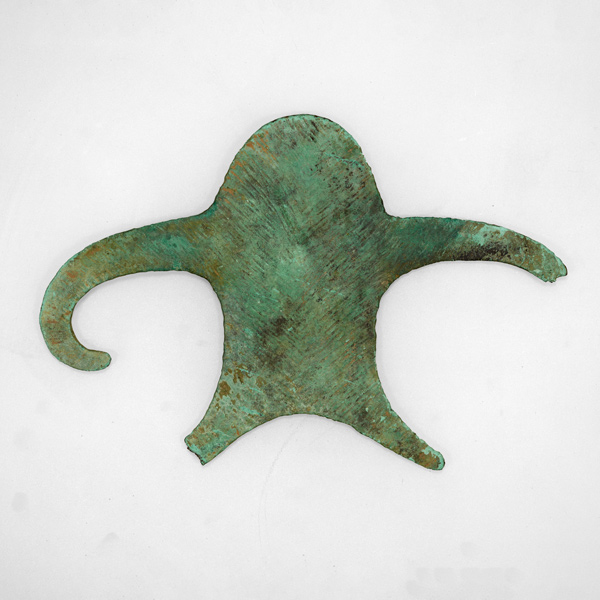
人形銅器
伝インド、ウッタル・プラデシュ出土 埋蔵銅器文化・前1500年頃
地下 12室
2025年5月27日(火) ~ 2026年5月31日(日)
60万年以上前に遡る前期旧石器時代の楔形石器や、インダス文明滅亡後の前2千年紀に栄えた埋蔵銅器文化の銅器はいずれもインドからもたらされた希少な考古資料であり、これらの展示を通してインドの先史時代と古代の文化を紹介します。また、タイ北東部のバンチェン地方ではおもに前3~後2世紀に武器や装身具を主体とする青銅器の文化が栄えました。当館が収蔵する500点以上のバンチェン出土品から選りすぐった優品を中心に、東南アジア各地からもたらされた多様な考古資料を一堂に集めて展示します。

怪獣蒟醤十二角形高杯
タイ・ラーンナータイ様式 16~17世紀
地下 12室
2025年9月30日(火) ~ 2026年2月1日(日)
東南アジアのカンボジア、タイ、ベトナムでつくられた陶磁器を時代別、地域別に展示します。クメールの灰釉・褐釉・黒釉のやきもの、タイの青磁や漆器(蒟醤)、ベトナムの青花・五彩を紹介します。
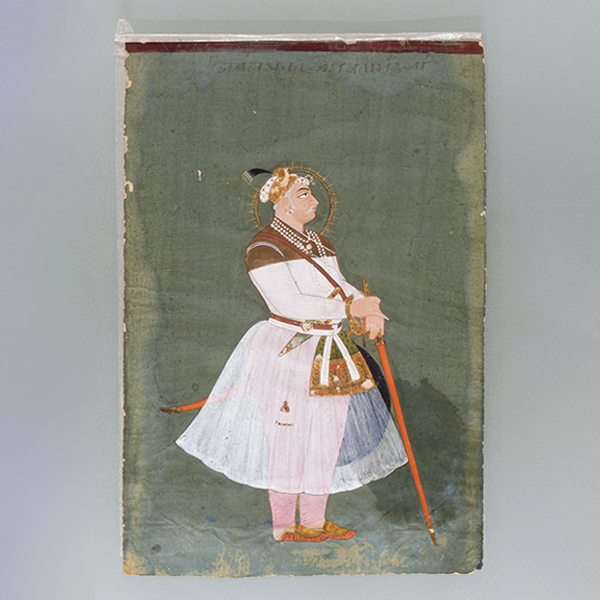
マールワール王ジャスワント・シング立像
マールワール派 インド 18世紀末
地下 13室
2025年10月15日(水) ~ 2025年11月16日(日)
インドでは、インド神話や、シヴァ神、ヴィシュヌ神などのヒンドゥー教の神々、王の肖像や歴史的なエピソード、男女の恋愛などさまざまなテーマを緻密なタッチと鮮やかな色彩で描いた、細密画とよばれる絵画のジャンルが発達しました。
今回はヒンドゥー教系の画派による肖像画をテーマに展示します。
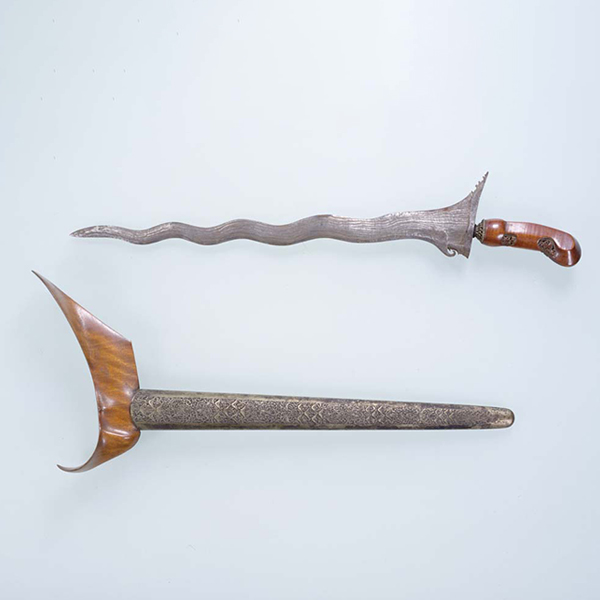
クリス
ジャワ島東部 17~18世紀 J.C.ベイレフェルト氏寄贈
地下 13室
2025年6月24日(火) ~ 2025年11月16日(日)
クリスとは東南アジアのマレー半島やその周辺の島々で用いられた短剣です。クリスは剣身・柄・鞘から構成されており、それぞれ形状や材質に趣向が凝らされています。剣身にはまっすぐな形状と蛇行する形状があり、多くのものは異なる種類の金属を層状に重ねて作られており、独特な刃文が表われています。クリスには神秘的な霊力があると見なされており、その霊力によって持ち主を守護するとともに、持ち主の威信を象徴します。現代のインドネシアでも結婚式などで男性が伝統的な正装をするときには腰帯にクリスをさします。このようにクリスは武器であるばかりでなく、芸術品でもあり、精神的あるいは社会的シンボルとしても用いられてきました。

サロン(腰衣) 藍地蝶花鳥唐草文様印金バティック (部分)
インドネシア・スマトラ島・パレンバン 20世紀初頭
地下 13室
2025年11月5日(水) ~ 2026年2月1日(日)
インド洋と太平洋に浮かぶ島々で構成される、インドネシア。その西部に位置するのがスマトラ島です。日本よりも広い面積を有するスマトラ島には、さまざまな民族グループが暮らしており、地域によって多様な織りと染めの技法が認められます。たとえば、ろうけつ染め(バティック)や印金を駆使して製作された腰巻、あらかじめ染め分けた緯糸を使って文様を織り出した緯絣(イカット)、金銀糸を刺繡した女性用のスカートなど、島の南北で衣装の形や、用いられる染織技法が異なっている点が大きな特色です。
また、大航海時代以前より香辛料交易を介し、インド製の更紗がインドネシアの島々にも伝来しました。文様の類似性などから、インド更紗はインド ネシアのバティックと影響しあっていたことが推測されています。
本特集では、スマトラ島の染織品の魅力を、20世紀初頭に撮影された着 装時の写真とあわせて紹介します。加えて、スマトラ製のバティックとスマトラ島伝世インド更紗をあわせて展示し、その関連性についても探ります。 る景色の写真にもご注目ください。